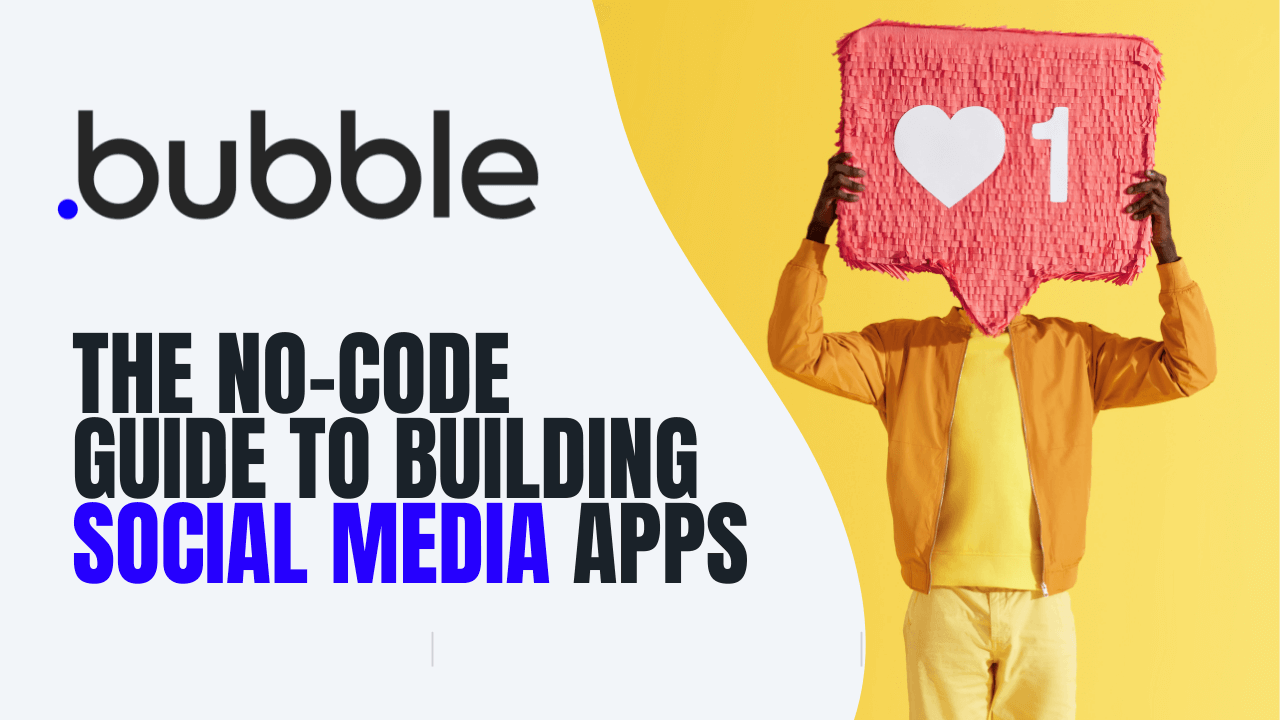Throughout this guide, we’ll uncover the process of using Bubble to build your own social media app without code. Building the next community or dating apps like Reddit or Tinder would traditionally require the expertise of one or more seasoned software engineers. As the no-code landscape evolves, however, it’s easier than ever for makers across the world to build their own powerful software.
Whether you’re looking to launch a business with your social network or just starting to learn what is capable with Bubble, this guide offers useful tips and resources for you to think about as you start building your app.
How to Build Different Social Networking Apps
Here are some guides we’ve put together on some of the most famous social networks. You can potentially copy and customize these to make your own app:
Bubble Showcase: Social Network Apps
Many founders have built their social apps on Bubble. Someone even built an exact clone of Twitter in under a week. Here are a couple other examples:
- The Nice Place - Earn a profit from being kind or helpful while using this social platform. Read our interview with the founder.
- NuCode - The community platform for makers to discuss and build all things no-code. Listen to the founder’s story.
- StudyDate - Get match-made with other students based on their similar academic goals. Read about what inspired the founder.
—Sanghoo Oh, StudyDate Founder
Frequently Asked Questions about Building Social Networks in Bubble
Q: How much will building and owning a social network on Bubble cost me?
A: In practice, building on the platform is free, whereas launching your app with a custom domain starts at $25/month, with the ability to upgrade as your app scales or your business grows. You can view our pricing plans here.
Q: How long will it take me to build my social network on Bubble?
A: It depends on each person’s experience and learning style, but building with Bubble is several times faster and cheaper than using traditional programming for the same result. Some of our app founders have been able to release fully functional MVPs in as few as 100 hours after discovering Bubble.
Q: What services can Bubble connect and integrate with for my social network?
A: Bubble offers hundreds of pre-built integrations and plugins that support social networks, including those for connecting to other social media platforms (Instagram, LinkedIn, etc.), and displaying content (Simple Video Player, Alphabet Profile Images, Tinder Pile, etc). Here’s our complete integration list.
Q: Can I scale my social network on Bubble if it becomes very successful?
A: Yes! With our paid plans, Bubble is equipped to handle scaling automatically, allowing you to expand and scale your app’s servers to meet your growing user numbers, traffic volume, or data storage.
Q: Can I hire someone to build my social network app for me?
A: Yes! A number of agencies build Bubble apps that are then easier for you to maintain and update than an app built in code. You can find available Bubble agencies here.
Additional Resources for Creating Your Social Network
Did you know that we offer a variety of Bubble Bootcamps that can help you hit the ground running on your social network? Our Jumpstart Bootcamps can help you master the basics, and our Build and Launch Bootcamps can help you build a market-ready social media app in just 8 weeks. From ironing out your app’s framework to mastering a specific Bubble technique to polishing your data structure, our Bootcamps are the best way to learn Bubble. For even more help building your app with Bubble, check out these resources:
- One-on-one Coaching Sessions - Structured learning with expert instructors
- Bubble Templates - See our very own Bubble Marketplace of ready-built, free, and paid social network templates. Some great options are:




Getting Started On Your Social Network with No-Code
Your social network app will only be as solid as the planning you do in advance. We’ll start by highlighting the key things to think about:
- Create the Data Structure of your social network app.
- Plan and design your app’s User Interface.
- Build out features and functionalities with Workflows.
If you haven’t already, it’ll be useful to get comfortable in the Bubble editor. We recommend completing our introductory lessons and crash courses, which will guide you step-by-step through the most common Bubble features. This will help you get a running start when building your social network.
Configuring Your Data Structure
When kickstarting your project, you can choose to begin by wireframing your product design, or building the necessary fields within your database.
In this case, we’ll start by laying out the data types and fields that you will use throughout your various app pages. Here are some examples of core data types within a social platform like Instagram:
- User - Already exists in the Bubble editor by default; additional example fields include Name, Handle, Profile Photo, Posts (List of Posts), Followers (List of Users), Following (List of Users).
- Post - Example fields include Post text, Post image, Comments (List of Comments), Likes (List of Users), Creator.
- Comment - Example fields include Post, Comment text, Author.
Bubble’s default database makes it easy to create different data types with unique fields. For more guidance, check out the video tutorial below on configuring your data structure, or read about it in our Bubble Manual.
Designing a User Interface and Page Structure
Next, we will focus on using Bubble’s visual design tool to shape the user interface of our product. First, determine the page structure of your app; below are the key components of an app like Instagram:
- Login page - The first page a user sees before they log into their account.
- Header - Where users can find your logo, a search bar, navigation menu, signup, and login/out buttons.
- Home page - Displays a feed of content posted by other users.
- Profile Page - Showcase a user’s details and posts.
- Individual Post Page - Showcase details of a specific post and its comments and likes.
- Upload Popup - Where users go to create a new post.
This video tutorial walks you through the basics of designing an interface:
You can also read further about all the above concepts in these additional Bubble Manual sections:
- Bubble Manual: Creating a Page Structure
- Bubble Manual: Building a User Interface
- Bubble Manual: Setting Up Your Database by App Type
Build Out Features and Functions with Workflows
Now that you’ve structured both the design and database for your app, it’s time to stitch it all together and make your product functional.
Some examples of the core features and functionalities you might want to build out in your social networking app are:
- User signup and login system
- User profile creation system
- Creating & publishing new posts
- Commenting & liking posts
- Displaying a home page feed
- Sending & accepting friend requests
- Displaying a profile page
Most importantly, in most social network apps, you won’t want to forget to set privacy rules and conditionals to keep your users’ data secure.
There are many more resources with detailed instructions on configuring these workflows, including in our How To Build articles.
Launching Your Social Network
Once you’ve gotten familiar with creating custom data fields, displaying dynamic content, and installing plugins, you can get even more creative and refine your social network until it's ready to launch. Our paid plans will also let you host your app on your own custom domain.
Check out the video tutorial below to understand how to deploy your app, or learn more by reading our manual:
A couple of last tips we’ll leave you with:
- Talk to potential users about your social media platform when in the planning stage. This will help you better understand crucial features to include when you start building your MVP.
- Adjusting to user feedback and iterating after your app goes live is easy in Bubble. You can update your live version at any point and create saved versions to roll back to if needed.
- We know learning on Bubble takes a little bit of time, but our community is here to help! Head over to the Bubble forum to collaborate.
Start building with Bubble today!

Build for as long as you want on the Free plan. Only upgrade when you're ready to launch.
Join Bubble








